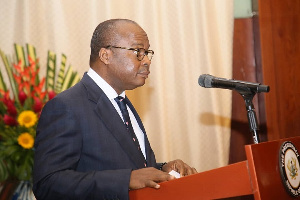Business News of Saturday, 18 December 2021
Source: newsghana.com
Ghana’s November inflation edges up to 12.2 percent on rising commodity prices
Ghana’s headline inflation climbed up to 12.2 percent in November as commodity prices soar, the latest data released by the Ghana Statistical Service (GSS) on Wednesday said.
The November inflation rate was 1.2 percentage points higher than the 11 percent recorded in October and the highest since the rebasing of the inflation basket in 2019.
Also, the 12.2 percent inflation rate is higher than the Bank of Ghana’s medium-term target band of 8.0 percent, two percent.
“The November inflation rate was due to the combined effect of higher food and non-food prices during the month under review,” Samuel Kobina Annim, the government Statistician said.
Food inflation resumed its dominance in the inflation basket, increasing to 13.1 percent in November and was higher than both the 11.5 percent in October and the average of 10.4 percent for the last 12 months.
Non-food inflation also increased to 11.6 percent in November from a previous level of 11 percent, partly due to higher fuel and transport costs, said the head of the GSS.
He added that inflation being a key macroeconomic variable tends to impact all other macroeconomic variables.
The Bank of Ghana hiked its benchmark policy rate by 100 basis points to 14.5 percent during its last meeting in November in response to the rising inflation. The bank uses the inflation targeting model as its key monetary policy tool to achieve the core mandate of price stability.
Ernest Addison, the Governor of the Bank of Ghana, acknowledged some lingering risks to the inflation outlook during the November meeting, despite the gradual recovery of the domestic economy.
“These risks include rising global inflation, high energy prices, uncertainties surrounding food prices, and investor behavior,” said Addison.
He added that these elevated inflationary risks required prompt policy action to re-anchor inflation expectations to safeguard the central bank’s price stability objective.











